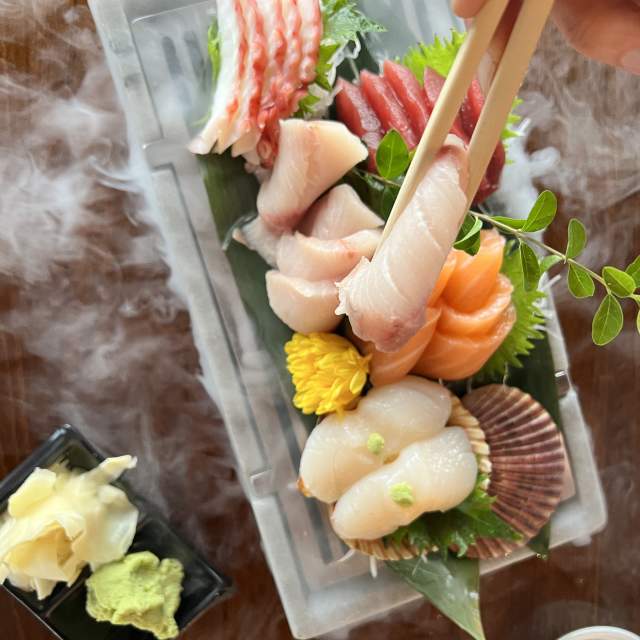Japanese cuisine is more than just sushi, with a range of flavors and dishes to try. To explore this cuisine, stock up on essential ingredients like soy sauce, miso paste, and dashi stock. Start with simple recipes like miso soup, teriyaki chicken, and tempura. Experiment with new flavors and textures like shiso leaves, umeboshi, wasabi, and katsuobushi. Try traditional Japanese dishes like okonomiyaki, yakitori, sukiyaki, and tonkatsu to experience the culture and history of Japanese cuisine. By going beyond sushi, one can discover the hidden gems of Japanese cuisine.
Beyond Sushi: Japanese Cuisine’s Hidden Gems
Introduction
When most people think of Japanese cuisine, sushi is often the first thing that comes to mind. While sushi is undoubtedly a favorite dish for many, Japanese cuisine has so much more to offer. From grilled meats to savory soups, exploring the diverse flavors of Japanese cuisine can be a rewarding culinary adventure. In this article, we’ll go beyond sushi and explore some of the hidden gems of Japanese cuisine.
Step-by-Step Guide to Japanese Cuisine
Step 1: Stock up on Japanese ingredients
The first step to exploring Japanese cuisine is to stock up on some essential Japanese ingredients. Some of the must-have ingredients include soy sauce, mirin, sake, miso paste, dashi stock, and Japanese rice vinegar. These ingredients are widely available in most grocery stores, and you can also find them online.
Step 2: Start with some simple recipes
If you’re new to Japanese cuisine, it’s best to start with some simple recipes. Some easy-to-make dishes are miso soup, teriyaki chicken, and tempura. These dishes use basic Japanese ingredients and are quick to prepare.
Miso Soup Recipe
– 2 cups dashi stock
– 2 tablespoons miso paste
– 1/2 block of tofu, diced
– 1/4 cup chopped scallions
Instructions:
1. In a pot, bring the dashi stock to a boil.
2. Reduce heat and stir in miso paste until dissolved.
3. Add diced tofu and scallions and simmer for a few minutes.
4. Serve hot.
Teriyaki Chicken Recipe
– 4 boneless, skinless chicken thighs
– 2 tablespoons soy sauce
– 2 tablespoons mirin
– 1 tablespoon sake
– 1 tablespoon sugar
– 1 clove garlic, minced
– 1 tablespoon vegetable oil
Instructions:
1. In a bowl, mix together soy sauce, mirin, sake, sugar, and garlic.
2. Add the chicken to the bowl and marinate for at least 30 minutes.
3. In a pan, heat the vegetable oil over medium-high heat.
4. Remove the chicken from the marinade and cook in the pan for about 5 minutes on each side or until cooked through.
5. Pour the remaining marinade into the pan and let it reduce for a few minutes.
6. Slice the chicken and serve with the teriyaki sauce.
Tempura Recipe
– 1 cup all-purpose flour
– 1 egg
– 1 cup cold water
– Vegetables or seafood of your choice (e.g., shrimp, sweet potato, broccoli, etc.)
– Vegetable oil for frying
Instructions:
1. In a bowl, mix together flour, egg, and cold water to create a batter.
2. Heat vegetable oil in a deep frying pan or pot.
3. Dip your vegetables or seafood into the batter and then carefully place in the hot oil.
4. Fry until the tempura is lightly golden brown.
5. Remove from the oil and place on a paper towel to drain excess oil.
6. Serve immediately.
Step 3: Experiment with new flavors and textures
Once you’ve made some simple Japanese dishes, it’s time to experiment with new flavors and textures. Japanese cuisine has a wide range of ingredients that can add a unique flavor to your dishes. Here are some ingredients to try:
– Shiso leaves: These leaves have a unique flavor that’s slightly minty and citrusy. They’re often used to garnish sushi or in salads.
– Umeboshi: These pickled plums have a sweet and sour flavor and are often used as a seasoning in rice dishes.
– Wasabi: This spicy green paste is made from horseradish and is often served with sushi. It can also be added to sauces or dressings.
– Katsuobushi: These are dried, fermented, and smoked skipjack tuna flakes. They add a smoky flavor and are often used in soups and stews.
Step 4: Try traditional Japanese dishes
Finally, to truly explore Japanese cuisine, you must try some traditional Japanese dishes. Here are some dishes to add to your list:
– Okonomiyaki: This is a savory pancake that’s often filled with cabbage, meat or seafood, and topped with Japanese mayo and bonito flakes.
– Yakitori: These are grilled chicken skewers that are often marinated in a soy sauce-based sauce.
– Sukiyaki: This is a hot pot dish that’s often made with thinly sliced beef, vegetables, tofu, and noodles cooked in a sweet and savory sauce.
– Tonkatsu: This is a breaded and fried pork cutlet that’s often served with rice and cabbage.
Conclusion
Japanese cuisine has so much more to offer beyond sushi. By stocking up on some essential Japanese ingredients and experimenting with new flavors and textures, you can create delicious Japanese dishes in your own kitchen. And by trying some traditional Japanese dishes, you can experience the rich history and culture of Japanese cuisine. So, go beyond sushi and explore the hidden gems of Japanese cuisine.
